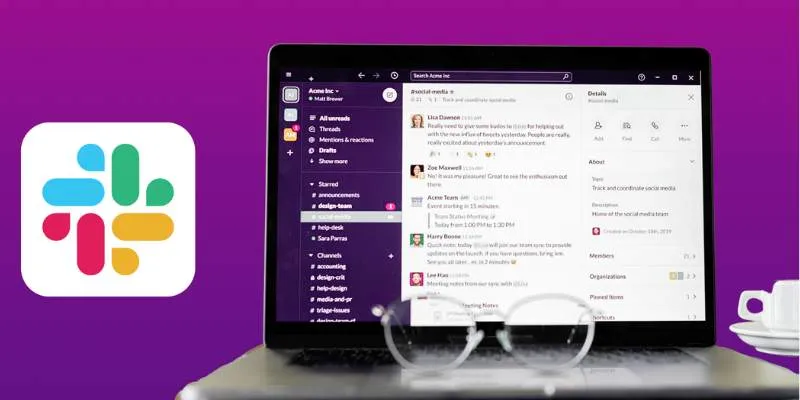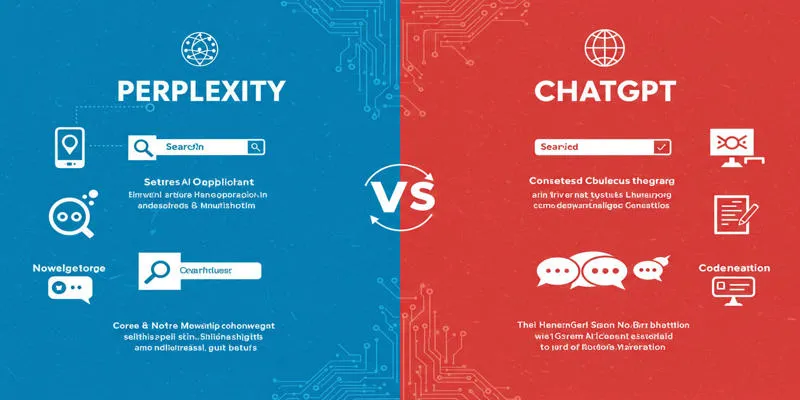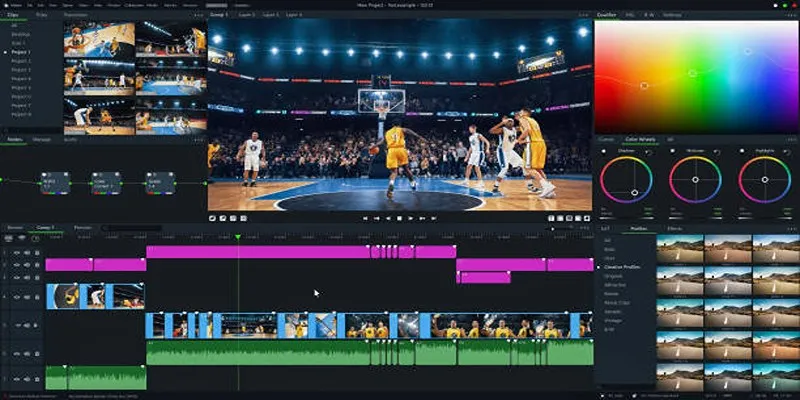Extract Important Data from Email with Parsio
In today’s fast-paced digital business environment, effective email data management is essential. Emails are used for customer assistance, vendor interactions, internal collaboration, and processing business-critical documents like orders and invoices by both startups and major companies. However, manually opening each email, checking for essential data, and entering it into relevant systems or databases is inefficient and error-prone. This is where a tool like Parsio can be a game-changer. Parsio automates email and document data extraction, helping organizations manage data intake smoothly, precisely, and with less effort.

Understanding Parsio’s Main Functions
Parsio is a robust data extraction tool that automates the parsing of emails and documents in various formats, including PDFs, Microsoft Excel and Word files, and text-containing images. By automatically extracting critical data fields, Parsio eliminates the tedious task of manual data entry, making it invaluable for businesses where speed, precision, and consistency are crucial.
Parsio’s user-friendly, no-code interface is a standout feature. By highlighting fields in a sample email or file, users can train Parsio to recognize patterns, creating a parser template that can be used for subsequent documents and emails. This means you won’t need to reconfigure a vendor invoice template every time you receive one. The product is highly customizable and can be used across various departments, including customer service, logistics, sales, and finance, with minimal setup.
Setting Up Parsio for Email Data Extraction
Parsio simplifies email data extraction for non-technical users. To get started, users create a custom mailbox via the Parsio dashboard. Emails can then be forwarded or auto-forwarded to this mailbox for processing. For example, you could set up [email protected] for purchase orders and [email protected] for customer inquiries. By categorizing emails, each type can be handled according to its data template, enhancing accuracy and organization.
Once your inbox is set up, upload or forward a sample email or document to serve as your parser template base. Parsio allows you to visually select information like customer name, order ID, total amount, and due date to extract. The highlighted fields become data points in a reusable template, ensuring that emails matching this format are automatically processed. Creating templates for different document categories ensures effective, organized data gathering across your organization.
Template, AI, and GPT-Powered Extraction Parsing
Parsio offers several parsing modes to accommodate different document formats and data structures. The template-based parsing method is ideal for automated order confirmations and invoice templates. By specifying the fields, Parsio consistently extracts data from similar formats, making it the fastest and most accurate method for handling organized data.
However, not all documents are well-organized or consistently laid out. This is where Parsio’s AI and GPT-powered parsing comes into play. AI parsing uses machine learning to recognize and extract data from scanned documents, photographs, and handwritten forms, making it suitable for businesses that send documents by fax or image. GPT-powered parsing, on the other hand, utilizes advanced natural language processing to interpret and extract meaning from conversational or loosely written emails, which is beneficial when handling customer requests or inquiries without a template. The multi-mode parsing capabilities of Parsio ensure it can handle a wide range of document challenges.
Parsio Integrations Automate Workflows
Parsio strengthens its functionality through easy integration with hundreds of third-party applications and automation systems. Through platforms like Zapier, Make (formerly Integromat), and Pebbly Connect, Parsio can connect with over 6,000 applications, including Google Sheets, Airtable, Slack, HubSpot, and QuickBooks. These integrations allow organizations to automatically send parsed data to the appropriate destinations, saving hours of manual effort each week.
For instance, if a corporation receives hundreds of purchase confirmation emails daily, Parsio can automatically extract and push client names, shipping addresses, item descriptions, and payment information into a spreadsheet or a CRM like Salesforce. Other departments can record support requests into helpdesk software, update bills with accounting systems, or feed lead information into marketing databases. This automation enhances operational efficiency, reduces human error, and ensures real-time data availability across departments.
Use Cases Across Industries
Parsio is versatile and serves various sectors with different data demands. In real estate, agents receive customer inquiries, property requests, and follow- up emails. Parsio gathers contact data, preferences, and dates to automatically populate backend systems, ensuring quicker responses and better customer experiences with less paperwork.
Legal firms regularly process contracts, case paperwork, and appointment confirmations. With Parsio, these can be processed to extract case numbers, customer information, dates, and deadlines, minimizing the risk of errors. Educational institutions use Parsio for handling enrollment forms and application emails, while healthcare providers use it to interpret patient appointment requests, test results, and referrals for EMR integration. E-commerce platforms rely on Parsio for handling delivery alerts and refunds. Overall, Parsio captures, organizes, and prepares data efficiently, avoiding bottlenecks.
Effective Parsio Use
To maximize Parsio’s potential, organizations should follow strategic best practices. Start by creating department- and data-type-specific inboxes and templates to streamline parsing procedures. This separation helps maintain accuracy and simplifies parser template management. Regularly update templates to reflect any changes in email format or document structure to prevent data extraction issues.
Additionally, leverage Parsio’s post-processing capabilities. These allow you to clean or modify data before sending it to other systems. For instance, if you frequently receive dates in multiple formats, you can apply a rule to standardize them. Custom rules can also remove unnecessary characters, extract text between markers, and adjust capitalization. Testing processes in a staging environment before going live ensures automation works seamlessly and helps identify formatting errors. Regular monitoring and inspection of parsed data enhance consistency and reliability.
Addressing Common Email Data Parsing Issues
Even with Parsio, irregular email formats and non-standardized content can pose challenges. Changes in document or email layouts by senders can disrupt template-based processing. In such cases, switching to AI or GPT-powered parsing may improve resilience. These modes rely on pattern recognition and language processing rather than strict format matching, making them preferable for dynamic data environments.
Parsing files like scanned invoices, handwritten notes, and multi-page PDFs can be difficult. Template-based parsing may fail with these files, especially if text is contained in graphics. Fortunately, Parsio’s AI parsing uses OCR to extract text from images and non-digital forms, greatly expanding its utility in paper-based businesses. Users should regularly review output samples and adjust templates and automated rules as needed. Parsio also offers comprehensive documentation and support to troubleshoot complex parsing issues and maintain reliable workflows.

Conclusion
In an age where efficiency and speed are crucial for competitiveness, businesses cannot afford to rely on manual data input. Automating email and document data extraction with Parsio offers a modern, intelligent solution. Parsio accurately captures, organizes, and delivers data to your business tools in real time, whether for order confirmations, support requests, financial reports, or customer inquiries.
With its ease of use, robust integration options, and diverse parsing capabilities, Parsio benefits organizations of all sizes. By reducing repetitive tasks and human errors, Parsio frees teams to focus on strategic decision-making, customer satisfaction, and business success. As more companies automate to streamline processes, solutions like Parsio will drive smarter, faster, and more scalable workflows.
Related Articles

What Makes Generative AI by Getty Images The Best AI Image Generator for Businesses?

Top 10 Slack Automation Ideas to Boost Workflow Efficiency

The 4 Best AI Website Builders for Effortless Website Creation

AI Job Search Tips

Perplexity vs. ChatGPT

The 9 Best AI Recruiting Tools

How to Unsend an Email in Gmail Effectively

6 Ways Businesses Are Using AI in eCommerce to Stay Competitive

Streamline Your Workflow with the 9 Best AI Meeting Assistants in 2025

Meta AI vs. ChatGPT: Key Differences and Which Is Better for You

The 6 Best AI App Builders in 2025 for Fast, No-Code Development

The Best AI Chatbots in 2025 to Power Conversations and Save Time
Popular Articles

How to Set Up an Automatic Out-of-Office Notification Bot: A Step-by-Step Guide

The 6 Best Free Stock Photo Sites in 2025 for Stunning Visuals Without the Price Tag

Best Free Ways to Convert QuickTime MOV to MP4 for Any Device

Beeper vs. Texts: Which All-In-One Messaging App Is Right for You

Creating Space-Saving Archives in WordPress

Top Ways to Record Gameplay on Nintendo Switch Without a Capture Card

How to Add Login with Facebook in WordPress: A Step-by-Step Guide

Top 5 Background Noise Removers for Desktop Users

Unlock Higher Productivity with These 10 Chrome Extensions in 2025

6 Ways to Automate Microsoft Office 365 and Boost Productivity

Best Vlog Editors for Every Device: 8 Tools You Should Try

 mww2
mww2